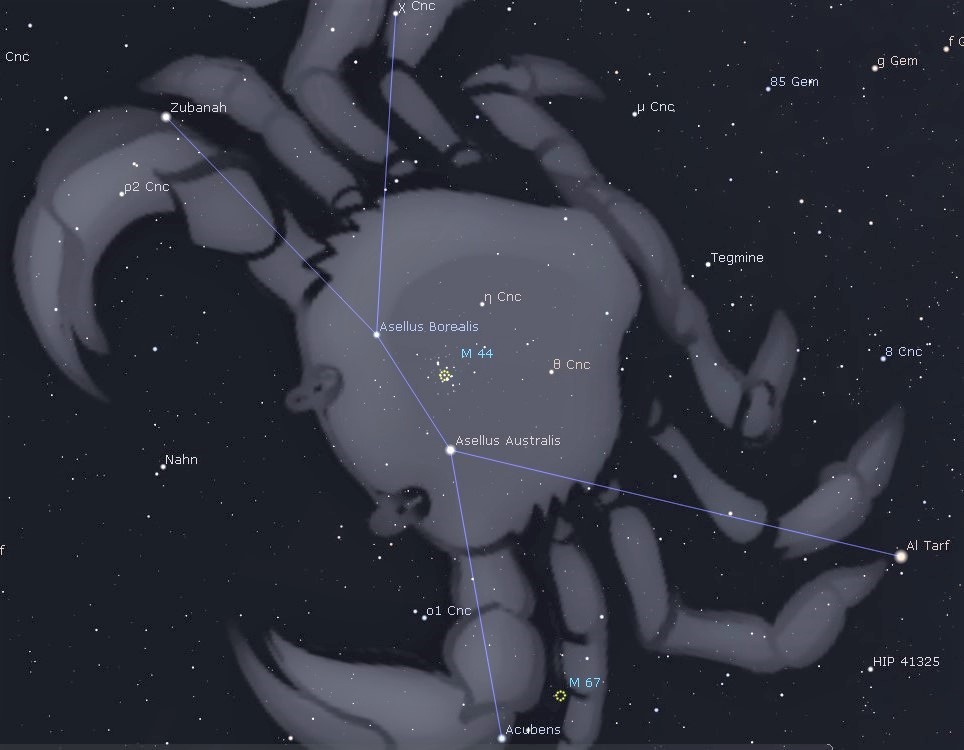This Week’s Sky at a Glance, 2022 February 5 – 12 ~by Curt Nason
The most inconspicuous of the zodiac constellations is faint Cancer the Crab, which is nestled between Gemini and Leo. In mythology, the crab was sent by the goddess queen Hera to distract Hercules while he was battling the Hydra. The crab was no match for the strongman’s stomp. Ancient Egyptians saw it as their sacred dung beetle, the scarab. In the first millennium BC the Sun was in Cancer at the summer solstice, the time when it halts its northward motion and slowly starts heading south. This back and forth motion of the rising and setting Sun on the horizon was perhaps reminiscent of a crab sidling on a beach. The summer Sun is now situated in Taurus near the constellation border with Gemini.
Cancer is recognized by a trapezoid of dim naked eye stars as the crab’s body, with a couple of other stars representing the claws. The four stars were also seen as a manger flanked by a pair of donkeys, Asellus Borealis and Asellus Australus. On a clear dark night we can see a hazy patch of hay within the manger, and binoculars reveal it as a beautiful star cluster called the Beehive, Praesepe or M44. Being near the ecliptic, the planets often pass through or near this cluster, masquerading as a bright guest star. The Beehive was once used to forecast storms, for if it could not be seen it was hidden by light clouds at the front of a weather system. Binoculars can reveal another star cluster, number 67 on the Messier list of fuzzy non-comets, less than a fist-width south of M44.
This Week in the Solar System
Saturday’s sunrise in Moncton is at 7:36 am and sunset will occur at 5:30 pm, giving 9 hours, 54 minutes of daylight (7:39 am and 5:37 pm in Saint John). Next Saturday the Sun will rise at 7:26 am and set at 5:40 pm, giving 10 hours, 14 minutes of daylight (7:30 am and 5:47 pm in Saint John).
The Moon is about a thumb-with to the left of Uranus around 8 pm on Monday, allowing a good chance to see the seventh planet in binoculars. It is at first quarter on Tuesday and telescope users might catch the lunar X around 2 pm. Jupiter is the only naked-eye planet in the evening sky but it is getting too low to offer a steady view in a scope, setting soon after 7 pm. Venus dominates the morning sky, being near its brightest and peaking a planetary triangle with Mars to the lower right and Mercury farther to the lower left.
On Sunday evening at 8 pm, tune in to the Sunday Night Astronomy Show via the Facebook page or YouTube channel of Astronomy by the Bay.
Questions? Contact Curt Nason.

